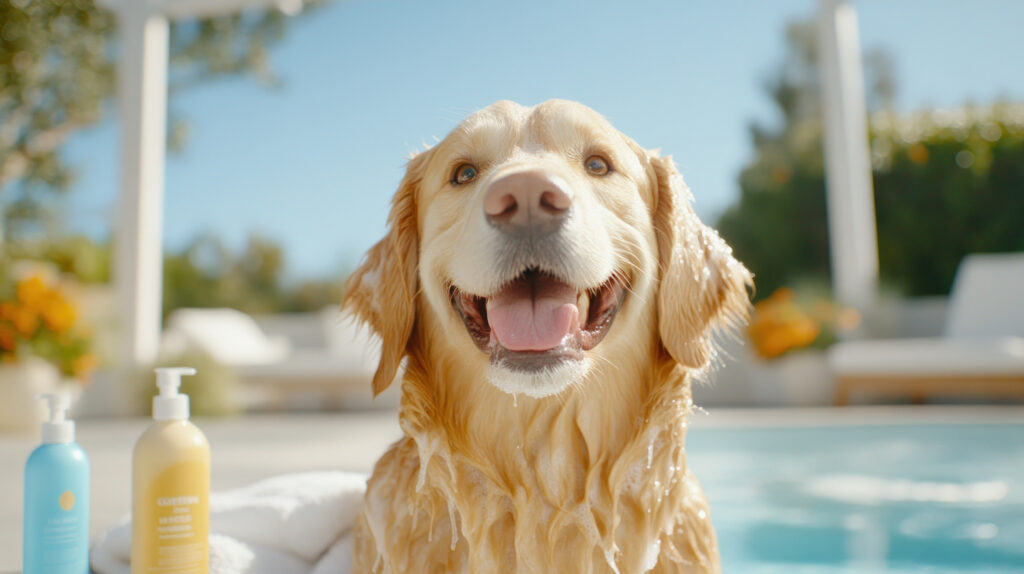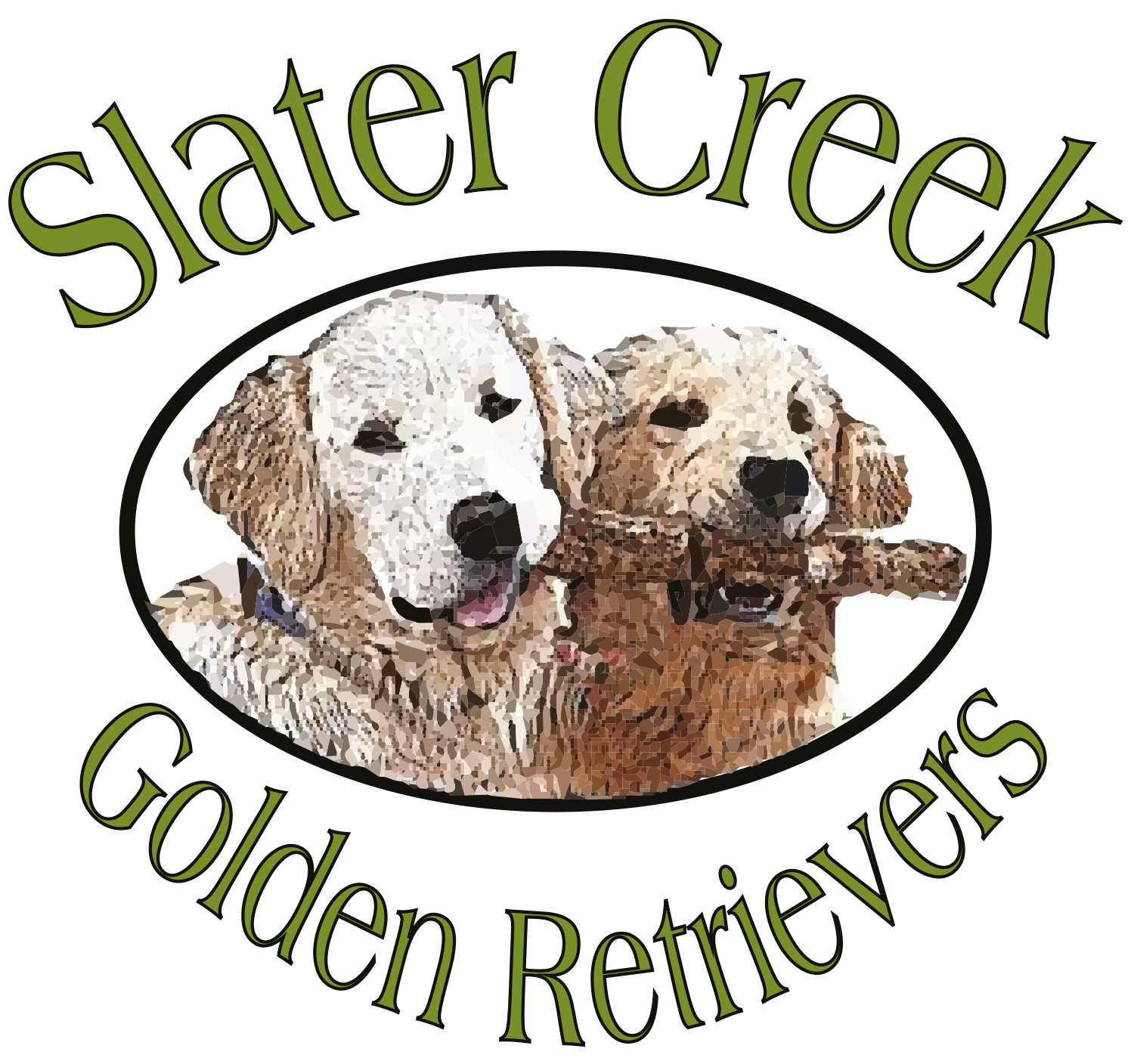Six years ago, when my Golden Retriever Bailey first padded into my life, I thought I was prepared. I wasn’t. The magnificent golden coat that drew me to the breed quickly became my greatest challenge – not because it was difficult to maintain, but because nobody had given me the unvarnished truth about what actually works.
After countless hours watching professional groomers handle Bailey during his appointments, interrogating my vet about skin health, and learning through my own trial and error, I’ve discovered that grooming a golden isn’t about buying the most expensive products – it’s about understanding the biology of the coat and working with it rather than against it.
The Truth About Golden Retriever Coats
The typical advice doesn’t go deep enough into what makes these dogs unique.

A Golden Retriever Loves Water
Beyond “Double-Coated”
Bailey’s fur isn’t just an aesthetic feature – it’s a sophisticated system evolved for retrieving game from cold water. His undercoat is water-resistant, not waterproof, a distinction that completely changes how it should be maintained.
When water penetrates a golden’s undercoat but can’t escape, bacterial and fungal problems begin, hiding beneath that beautiful top coat until they become serious. This happened during Bailey’s second summer when a hot spot appeared seemingly overnight, resulting in a shaved patch and antibiotics. That experience transformed my entire approach to his grooming.
Shampoo: What Manufacturers Won’t Tell You
The pet industry thrives on specialized products, but the reality is both simpler and more nuanced.
The Marketing vs. Reality Gap
Most “golden retriever specific” shampoos are marketing ploys rather than formulations based on the breed’s actual needs. After testing dozens of products, from budget to luxury, I’ve found that the most important factor isn’t the brand or the price – it’s understanding your individual dog’s skin condition.
Bailey has naturally dry skin that worsens in winter. The breakthrough came when our veterinary dermatologist explained that many dog shampoos contain sodium laureth sulfate – the same ingredient that makes human shampoos foam dramatically. While satisfying to use, these surfactants strip essential oils from a golden’s coat, creating a cycle of dryness, overproduction of oils, and then more bathing to address the resulting greasiness.
Now I use a sulfate-free, silicone-free formula with minimal ingredients. The reduction in Bailey’s scratching was noticeable within three weeks. Most importantly, I stopped bathing him monthly as commonly recommended and switched to every 8-10 weeks unless he’s visibly dirty or smelly. His coat has never looked better, with that natural golden sheen returning once his skin’s oil production normalized.
The At-Home Formulation That Changed Everything
When Bailey developed sensitivity to commercial products, our vet suggested a simple solution: diluted unscented castile soap with a few drops of colloidal silver. This gentle combination cleans effectively without disrupting his skin’s microbiome. For conditioner, a 1:4 mixture of apple cider vinegar and water, sprayed on after rinsing and left in, restored his coat’s pH balance and natural shine.
Brush Selection: The Hidden Science
The right brushes aren’t just tools – they’re extensions of your understanding of how golden fur grows and sheds.
The Three-Tool Minimum
After cycling through a drawer full of grooming tools, I’ve settled on three essential instruments that work in harmony:
A long-tined metal greyhound comb has become my diagnostic tool. Running it through Bailey’s coat before brushing immediately reveals any beginning mats or problem areas, particularly in friction spots like behind his ears and in his “arm pits.” This step takes only 30 seconds but saves hours of detangling later.
For weekly maintenance, a double-row undercoat rake with rotating pins has replaced all other de-shedding tools. The critical technique I discovered through a professional handler is to use it nearly parallel to the skin rather than perpendicular. This approach removes loose undercoat without pulling healthy fur, leaving Bailey comfortable rather than tender-skinned after grooming.
For daily care, a boar bristle brush – yes, the same type humans with thick hair use – distributes oils through his coat without the static electricity that nylon brushes generate. This natural redistribution of oils creates a water-resistant barrier that protects his skin during our frequent lake swims.
The Unseen Connection Between Diet and Coat
The most significant improvement in Bailey’s coat didn’t come from external products but from internal nutrition.
Beyond Standard Supplements
After noticing Bailey’s coat becoming increasingly brittle despite proper grooming, our holistic vet tested his fatty acid levels and discovered an imbalance. Rather than the standard fish oil recommendation, she prescribed a specific ratio of omega-3 to omega-6 fatty acids tailored to his test results.
The transformation was remarkable. Within six weeks, his new growth came in noticeably softer and more resilient. This experience taught me that external grooming only manages symptoms – true coat health begins internally.
The Reality of Golden Retriever Maintenance
Living with a golden retriever means accepting a certain level of fur in your life. No grooming routine, however thorough, eliminates shedding completely. The difference lies in managing it proactively rather than reactively.
I’ve found that consistent, shorter grooming sessions integrated into our daily routine – five minutes after our evening walk, for instance – prevent the marathon brushing ordeals that both Bailey and I dreaded. This approach removed the power struggle from our relationship and transformed grooming from a chore into a bonding ritual we both genuinely enjoy.
